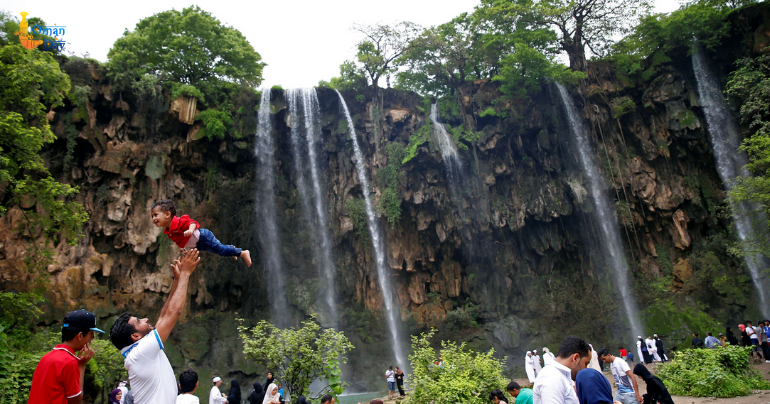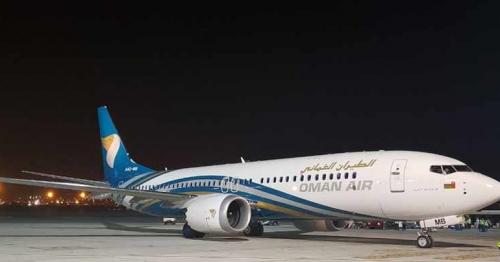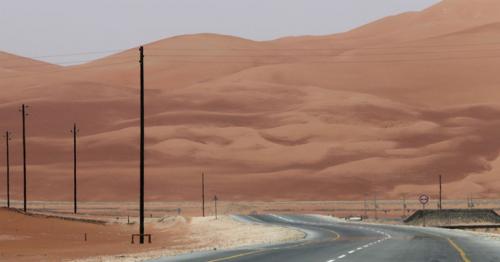Is tourism the antidote to youth unemployment in Oman?
A stubbornly high youth unemployment rate is one of Oman's most pressing internal issues. Roughly half of Oman's youths are unemployed, the World Bank estimates.
In 2011, late Sultan Qaboos announced the creation of 50,000 jobs for Omanis in an attempt to defuse unprecedented nationwide protests. Similar promises were made in 2017, 2018 and 2019, yet many Omanis await structural economic reforms, as the hydrocarbon industry accounts for 74% of government revenues but employs only 16,000 citizens of the Gulf state.
“I am pretty sure the economy will dictate certain unavoidable reforms in the next few years,” John Sfakianakis, the chief economist of the Saudi Arabia-based Gulf Research Center, told Al-Monitor.
In an attempt to energize the domestic economy, the country’s road map for social and economic reform identifies five high-priority sectors, including the employment-intensive tourism industry. Ranked as one of the fastest growing industries in the world, the tourism sector could employ a total of 535,000 people, directly and indirectly, in Oman by 2040 to cater to 11 million visitors.
“The number of jobs available [has increased], and the sector is trending among youth,” said May al-Kaabi, a 22-year-old Omani student at the Oman Tourism College. As the sector lacks female participation, it "makes sense" to become a tour guide, she said.
Growth depends on government support
Some accuse the government of making empty promises. “They just want people to wait and forget the current situation," Sulaiman al-Rahbi, 30, an IT engineer, told Al-Monitor. "Thousands of graduate Omanis struggle to just live. Are they going to wait 20 years to have a job? I think this is just a joke.” Indeed, although the number of tourists visiting Oman has doubled since 2008, the industry employs less than 17,000 Omanis.
“I just want to tell those who doubt to be optimistic,” Salim Aday al-Mamari, Oman's tourism director, told Al-Monitor. But the promises to allocate 223,000 direct tourism jobs to Omani nationals by 2040 does not align with Oman's undersized tourism education sector, which graduates only a few hundred students per year, mainly from the Oman Tourism College.
The country’s tourism strategy acknowledges this challenge and recommends the creation of 10 new education programs. “We need to maintain the quality of our product, hence, the government should invest more in qualifying the Omani workforce,” Bader Thuhli, a professor at Oman Tourism College, told Al-Monitor, suggesting that tourism education be made available throughout the country.
The government is expected to play a "crucial" role in tourism development by injecting $6 billion over 25 years to trigger $43 billion worth of investments from the private sector.
Mamari said that Oman's new sultan, Haitham bin Tariq Al Said, as well as the government, will provide "very special" and "unlimited" support to tourism development.
However, limited fiscal resources could curb those ambitions. The country’s ratio of debt to gross domestic product is rated junk by all three major agencies, as it has multiplied by 12 since 2014. Moreover, the Omani economy is ranked the worst performing among Gulf countries.
In this context, global hospitality companies are expected to take the lead in developing the 50,000 additional hospitality keys Oman needs by 2040. “The concept of SMEs [small and medium enterprises] does not exist in the field of tourism anyway, the whole system is designed for large corporations,” said Christopher Chellapermal, a French entrepreneur. Chellapermal ran a scuba diving business in Oman for 15 years before being forced out of business in 2017.
“Corruption was also an issue since local authorities requested me to pay imaginary taxes," he said. "I am an ordinary man so I had to shut up and comply.”
Target markets
For Chellapermal, Oman "makes the crazy wager" of luxury tourism by prioritizing premium visitors when the backpacker segment would be a better fit.
Ralph Hollister, a travel and tourism analyst at GlobalData, told Al-Monitor that Oman might have to "think about attracting lower-yielding tourists" and look into emerging markets to reach 11 million annual tourists by 2040. In 2020, the Omani Ministry of Tourism expects to establish a representation office in China.
“Chinese and Indian tourists are very much interested in culture and heritage destinations," Hollister said. "Oman could focus on this segment to make it their niche, a differentiator.” Hollister described Oman’s tourism strategy as ambitious. “Whether they will actually meet the target, I am not sure, but aim for the stars and you will reach the moon,” he said.
Indeed, Oman has a competitive advantage over neighboring markets, with its wealth of cultural and natural assets. The Ministry of Tourism promotes Oman as a hidden jewel at the tip of the Arabian Peninsula.
Tourists looking for a cultural and nature-oriented getaway have many choices in Oman: wind-blown deserts, pristine beaches along the Gulf's second-longest coastline, a prominent mountain range, World Heritage sites, museums and areas of archaeological importance. Recent improvements in tourism infrastructure were highlighted in 2018 with the opening of Muscat’s new airport terminal.
Competition with Saudi Arabia
Following the attack on two tankers off the Omani coast in June 2019, one might wonder if the security concerns that arise from Oman's proximity to Iran will create sector-specific challenges. “We have heard this debate for years across the GCC [Gulf Cooperation Council] and in effect regional tensions had very little impact on tourism,” said Philippe Vercruysse, a senior consultant at TRI, a leading tourism consulting firm in the Middle East.
But political instability could come from neighboring states. As Sultan Haitham bin Tariq Al Said takes power, analysts worry that Oman’s foreign policy of neutrality could be at stake. Will “any of Oman’s more assertive neighbors seek to sway Haitham to align more closely with their own approach,” Kristian Coates Ulrichsen wrote for Al-Monitor.
The prospect of tensions between Muscat and neighboring states does not please tourism actors, as Saudi Arabia and the United Arab Emirates are Oman’s key source regional markets for tourism. In 2018, Gulf citizens accounted for about half of international arrivals.
Yet, even with political stability, the number of Saudi travelers to Oman is expected to decline as Saudi Arabia revamps its economy to create more entertainment opportunities. “Saudi travelers are probably going to spend their dollars back home,” Vercruysse said.
On top of that, Saudi Arabia’s aggressive push to develop its leisure tourism industry and attract 100 million visits by 2030 collides with Oman’s ambitions. Vercruysse said that some degree of competition is "inevitable," but he believes regional cooperation could create "a compelling tourism offer" for those who plan to hop around the Gulf.
Such a multi-destination journey would have pleased a group of British tourists that Kaabi guided. “They only knew about Dubai before their cruise ship called in Muscat for a short visit," she said. "Following this trip, I assume they will return home and become Oman’s best ambassadors."
tag: unemployment , oman , worldbank , estimation , stubborn , tourism , youth , omannews
Share This Post






